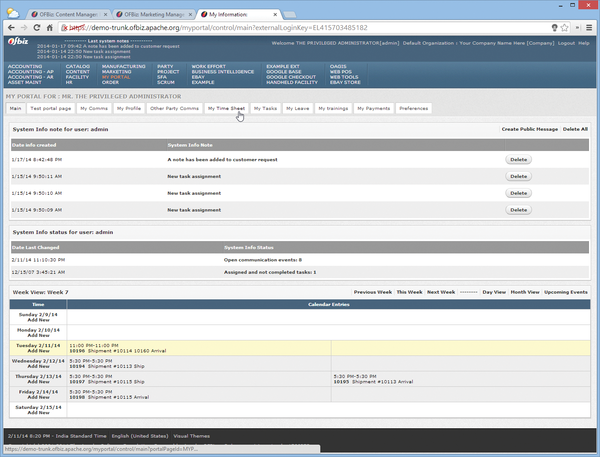
You can find additional examples of this type of data file in OOTB OFBiz. Here is an example from accounting/ofbiz-component.xml. This can happen because when scheduled services are loaded again, the system may start running, and it may perform jobs that you don’t want it to perform again. So if you load seed-initial data again in further deployments, the system may function less effectively due to multiple records for the same job. By preparing the data in JobSandbox entity you can schedule services that are loaded when you are deploying the system for the first time for execution. So you need to be sure to load this type of data in production systems only for the first time. It is to be maintained along with sources like other seed data. data for SequenceValueItem and/or JobSandbox entities. Seed-initial: This reader is used for data that is only required for the first-time system setup e.g.

So whenever you need to remove or update the seed data from the database, you should update data in XML file as well.

It should not be changed or removed in the application database without first having done so in the seed data XML files (for example, data like RoleType data, “CUSTOMER, BILL_TO_CUSTOME, or StatusItem data such as “ORDER_APPROVED”, “ORDER_CANCELLED” and Enumeration data). Seed: This reader is used for loading the basic application data/minimum data that is required to run any application. It is created and maintained along with the code and should be loaded into the database when the code is updated. Below is the description of each of the data-readers: Here you can specify the name of the reader of the data you want to load. ant load-readers -Ddata-readers=seed,seed-initial,demo This command will load all the data meant for generic OFBiz development, testing, demonstration, etc.įor loading any specific type of data you can use the following command data-reader: $. To load data in a fresh copy you can run the following command: $. Let’s get started with the basic data setup for Apache OFBiz. Now let’s take a look at how this data categorization works in OFBiz.



 0 kommentar(er)
0 kommentar(er)
